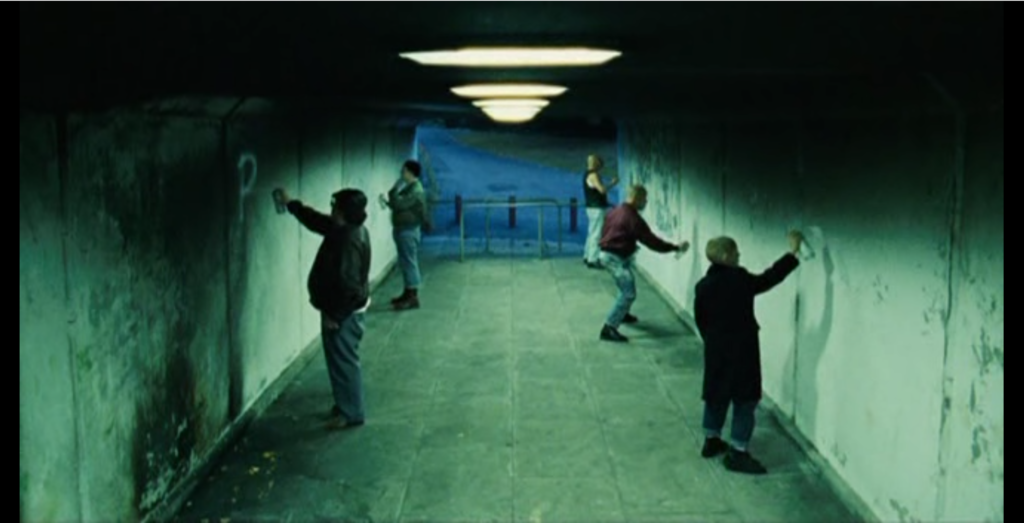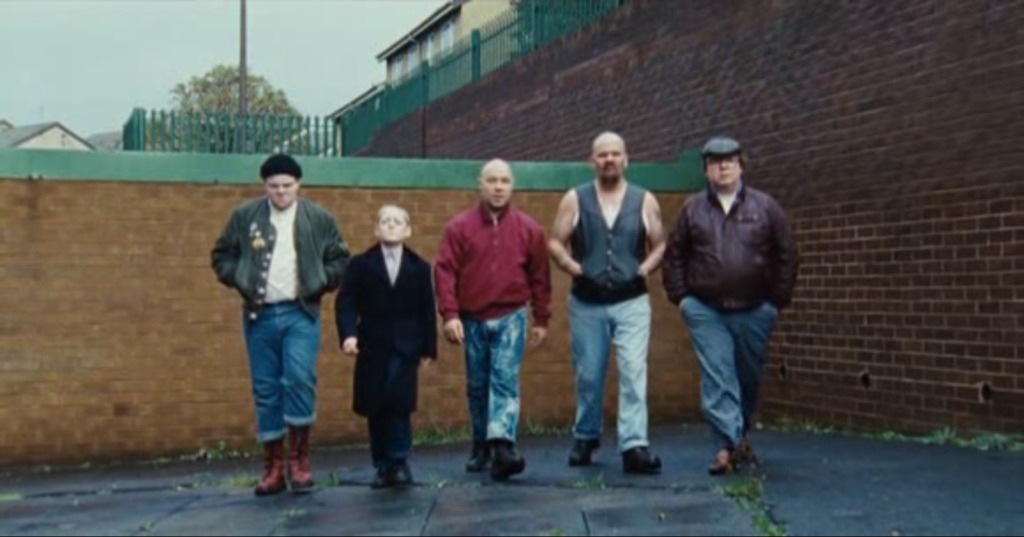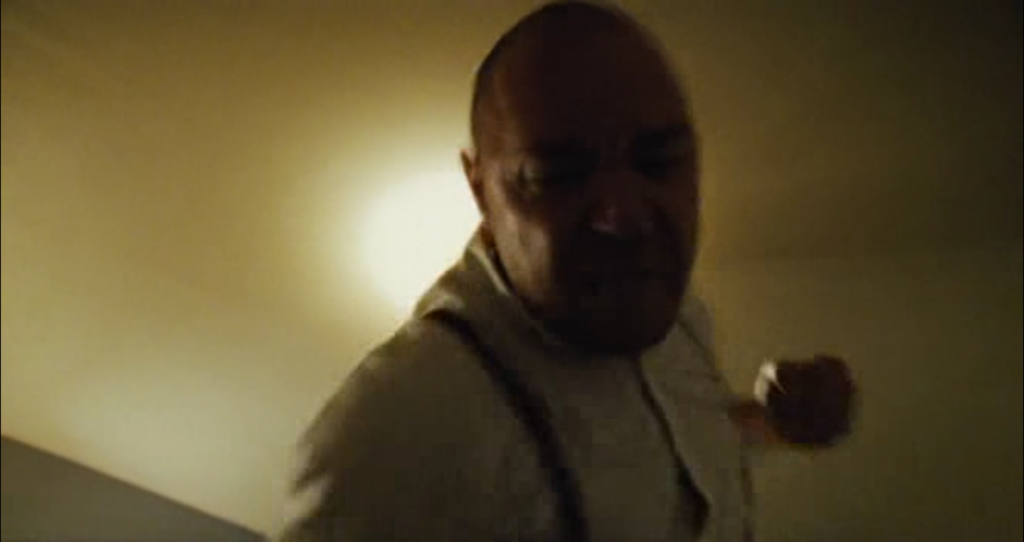Mise-En-Scene
The mise-en-scene is this film is used very effectively to support the tone of the film and to help explain to the audience what is going on in the film and the feelings that the characters are experiencing throughout the film. It also adds to the realism and versimilitude of the film, as this is a period piece. A very evident example of that is, in terms of costume, the skinhead ‘uniform’, which is used throughout the film to convey numerous ideas, such as the bond between the members of the gang. It also shows Shaun’s acceptance into the culture of the skinheads as well as Milky’s pride for his culture, which he has until his final scene in the film, where he is nearly beaten to death by Combo. The use of setting certainly adds to the versimilitude and realism of the film, as most of the film was shot in the real world locations of St Ann’s and Wilsthrope College in Long Eaton, in Nottingham. Also, the use of graffiti adds to realism of the film, showing the political views of people in the area. And in terms of characterization it shows Shaun’s lack of understanding when it comes to racism, as he simply graffitis he own name instead of a racial slur. The sound of the film, especially the soundtrack, and even more specifically the melancholic song by Ludovico Einaudi, conveys to the audience the negative impact that Combo has on Shaun’s life. Also, the use of ska music further reinstates the skinhead movement shown in the film. Finally, the constant radio chatter heard throughout the film keep the parallels between the conflict of the Falkland Wars and Shaun’s life fresh in the viewer’s mind, and show to the viewer why many English were angry at this time and why they were fed up with life, not that it excuses the disgusting behaviour of certain characters in the film.

Editing
Throughout the film, there is a heavy use of montage throughout, the main two examples being the montages of archive footage in the opening scene and the montages showing the different stages of Shaun’s life throughout the film. The first example sets the time period of the film, using lots of pop culture and historical footage from the 80s. Near the end of the montage though, it focuses on the conflict in Falklands War, which is constantly mentioned in the film due to Shaun’s dad dying in it. This invites the spectator to draw ideological parallels between the conflict and the event’s in Shaun’s life. The montages of Shaun show the three main stages in his journey/life as a young kid growing up during these times. The first one features numerous long shots conveying the isolation that Shaun is feeling at this point in his life. The second one has a more upbeat mood, showing footage of him having fun with Woody’s gang to the upbeat sound of ‘Louie Louie’. The final montage is much more serious in tone and it is when Combo is ‘training’ Shaun. The more serious tone matches the much more explicit and realistically depressing content of a young boy committing racist acts to people around him. The three different montages are useful for comparative analysis, as the tone of each one varies dramatically.

Cinematography
The cinematography used throughout the film allows for a more personal connection to the world of the film and to the characters within it. An example would be the handheld camera which is used throughout the film, which contributes to the authentic tone of this social realist film. An interesting use of cinematography, which remains in my mind as being very interesting, is the use of big close up shots, an example being the one used in the conversation between Combo and Shaun. In terms of the characters, this suggests a bond growing between the two of them, but for the audience it allows them to become much more intimate with the characters of Combo and Shaun and this may even be one of the points in the film where the audience likes Shaun, as in this scene he is shown to be somewhat caring towards Shaun, almost being like his father figure. A final example of cinematography that allows the audience to be more intimate with the characters in the scene is the use of POV shots from Milky’s perspective in the assault scene, which not only aligns the audience with him, but it creates greater emotional impact and horror.

Sound
The sound within the film does a multiltude of things within the film. It helps the audience be dropped back in time to the land of the 80s, with ska tracks such as Toots and The Mayals ‘Louie Louie’, which adds to the versimilitude of the film. Another feature of sound, which was previously mentioned, was the use of radio chatter of Margaret Thatcher talking about the Falklands War. This allows the viewer to draw parallels between Shaun’s life and the Falklands war, which he has been greatly affected by, as we know he has lost his father, which could be said is the main reason for his lack of direction in life.